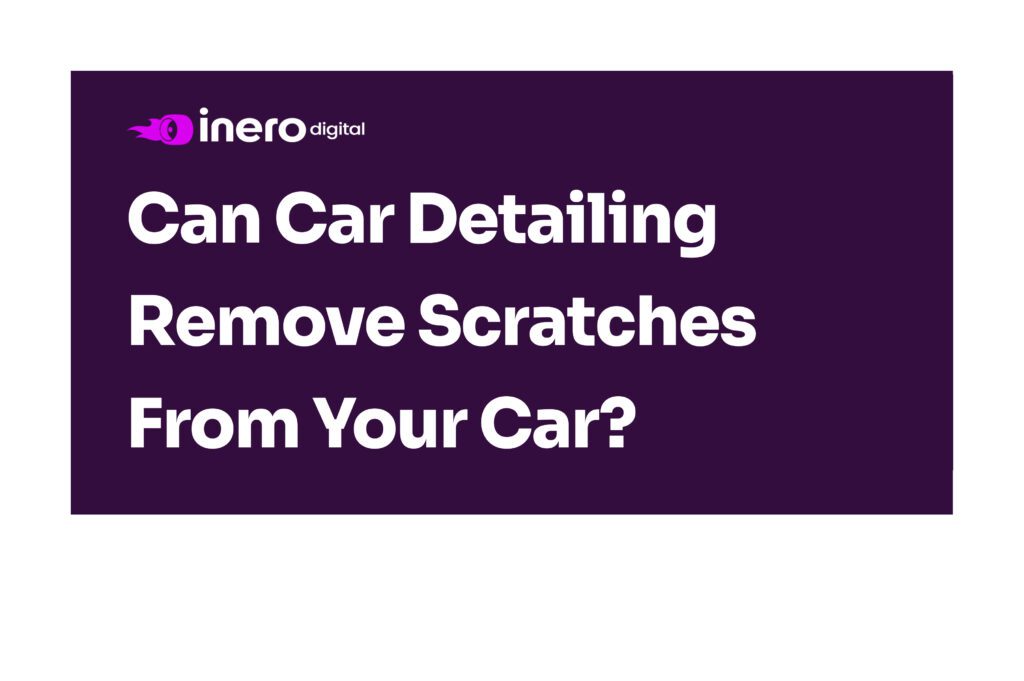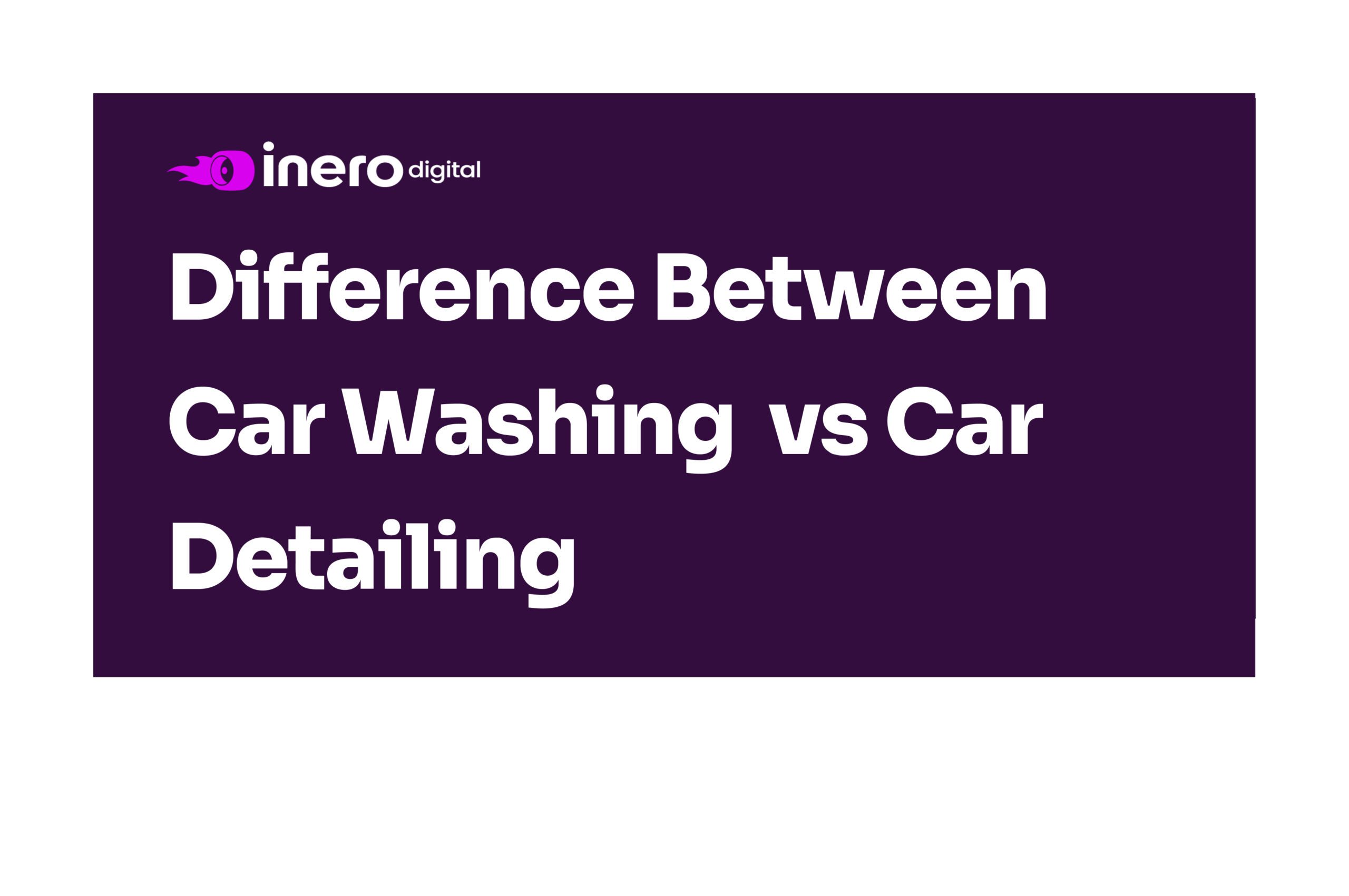Any car owner or enthusiast will tell you that their car is their baby, and a scratch is the last thing they ever want to see on it. But, let’s be honest: things happen beyond their control, and a blemish on their ride is an unavoidable outcome.
Getting rid of a scratch can be expensive, and not all scratches can be fixed with just a quick trip to their local car wash. When the easy fixes don’t cut it, car detailing is an option. Continue reading to learn more about car detailing and how it works.
What is car detailing?
Car detailing is the process of cleaning and reconditioning any vehicle to make it look brand new. This service is in-demand as it can clean the dirt from hard-to-reach areas that a simple car wash cannot clean while improving the vehicle’s overall appearance.
Car detailing involves manual labor, unlike a regular car wash that functions under an automated system. Professional car detailers are responsible for applying the best practices in exterior and interior car detailing by hand. They generally incorporate specific methods and skills honed through experience to ensure high-quality service and satisfied customers.
Given the extensive processes involved, car detailing costs are significantly higher than a regular car wash. Professional car detailers commonly offer car detailing packages with varying prices, depending on the scope of service and vehicle size. Basic packages for regular-sized vehicles are initially more affordable, whereas the auto detailing package for a van or SUV would cost twice as much as that of a standard-size car.
Different types of auto detailing
There are different auto detailing services available depending on the customer’s needs and the car’s condition. To understand what services are included in the auto detailing packages, here are the services provided by professional car detailers:
Interior Cleaning
Interior car detailing deals with the interior of a vehicle, encompassing all the materials found inside, such as natural fiber, plastic, carbon fiber, leather, and aluminum. Professional car detailers prioritize interior cleaning before the vehicle’s exterior to allow the soap to soak in washable parts.
Although interior detailing does not include scratch removal, professional auto detailers consider cleaning the vehicle’s interior to be part of their service, and it typically takes less time than exterior detailing.
The different processes involved in interior detailing are the following:
- Vacuuming – Interior cleaning begins with the use of a vacuum. Seat, carpets, mats, and other areas are vacuumed to remove dirt and unwanted materials.
- Scrubbing and Brushing – The floor carpets and mats are thoroughly cleaned, removing visible stains and marks. After scrubbing and brushing, the rugs and floor carpets are transferred to dry out, eliminating the chance of fungal development.
- Steam Cleaning – Steam cleaning removes tough stains, greases, and dirt. Steam cleaners can produce steam up to 325℉ that eliminates harmful microscopic organisms left on the surface.
- Glass Cleaning – This process involves using a glass cleaner to clean the windshields and windows of a vehicle.
- Leather Trimming – The leather parts of a vehicle are cleaned using leather soap, leather cleaner, and saddle soap. Once the leather is dry, a leather conditioner is applied to polish the material further.
- Perfuming – Professional car detailers finish interior cleaning by adding a car deodorant, leaving a fresh and pleasing scent.
Exterior Cleaning
Exterior detailing starts with a complete vehicle exterior inspection by checking the bumpers, tires, spoilers, and rocker panels for any prevailing foreign materials. Afterward, the following processes are observed:
- Washing – The professional car detailer sprays the vehicle with a specialized product using a high-pressure spray and washes it by hand. Exterior washing includes glasses, rims, door handles, and jams.
- Drying – After washing, the remaining liquid is usually dried by wiping or blowing. Some car detailers spray a drying aid to quickly dry the surface and prevent water spots from accumulating, which can lead to paint corrosion.
Machine Buffing
Machine Buffing or Paint Correction is a part of exterior detailing that deals with the vehicle’s paint. This process removes flaws in the car’s paintwork, ensuring a brand new shine. The methods for effective machine buffing are as follows:
- Claying – A clay bar is applied to the vehicle’s exterior to remove dirt residue, contaminants, and impurities. Claying makes the paint surface cleaner and smoother and improves the vehicle’s shine before polishing and sealing.
- Polishing – The professional car detailer uses a polishing compound on the vehicle’s paint, allowing the car to regain its original shine. Polishing is an effective way to hide but not wholly remove minor scratches.
- Sealing – Sealing is usually the final step for exterior detailing. A wax or sealant is applied to give the car paint a glossy shine and add a protective layer that will not quickly wear off.
How are scratches created on your car?
Car scratches can occur for various reasons. Road debris, improper washing and drying methods, animals, car accidents, unintentional car bumps and side sweeps, poor parking, and vandalism are the most common causes of scratches.
Although not all scratches are visible, it is still beneficial to understand the different types of scratches in order to determine if they can be removed and to help reduce the risk of getting them on our vehicle in the future.
Different types of scratches
Light Scratches
Light scratches, also known as Clear Coat Scratches, occur on the top clear coat of a vehicle. The clear coat is the layer of protection for a car’s paint, directly exposing it to the environment. Any foreign material that hits the clear coat with moderate to strong force can easily damage the paint protection, causing scratches on its surface.
Swirl Marks
Swirl marks are fine scratches found on the car paint caused by the improper use of detailing materials, such as a towel. Though it can’t easily scratch a car’s surface, unwanted dirt or dust on a towel, when combined with water, can result in swirl marks.
Other causes of swirl marks come from the wrong type of polishing pads, harsh paint cleaners and polishing compounds, improper washing methods, dirty car covers, dirty car dusters, and automated car washing.
Paint Transfer Scratches
Paint transfer scratches happen when a vehicle comes in contact with another vehicle or object and causes paint to transfer and create scratches on the surface. Car owners can quickly notice scratches on their vehicles despite the affected area’s size due to a color changer.
Deep Scratches
Deep scratches can be classified into two: Base coat scratches and Primer scratches.
Base coat scratches can’t be removed through simple polishing because paint color is either missing or affected. This deep scratch affects the base coat, which gives the car its color and makes the scratch highly visible.
Primer scratches are the most crucial type of scratch. This scratch cuts through the clear coat, base layer, and primer, with worse cases even damaging the metal layer of the vehicle. Primer scratches are impossible to polish since the metal is visible, and it would often require repainting or part replacement.
Can a car detailer fix scratches on your car?
Not all scratches on your car can be fixed by a detailer. The process of car detailing does not entirely remove scratches permanently but can only fix and hide light scratches on the clear coat and base layer.
Car detailing won’t eliminate deep scratches like primer and base coat scratches. These two scratches affect the base layer and clear coat, which cannot be buffed or polished. Doing so might only worsen the scratch, and professional auto detailers don’t risk repairing deep scratches unless they offer mechanic services.
Paint transfer scratches can be an exception, but only if the affected area is minimal. Professional auto detailers need to match the affected area’s color, which makes it a challenge if the paint job is unique.
How do auto detailing shops get rid of scratches?
Car detailing shops can repair minor scratches by conducting several methods, depending on the type of scratch. Light scratches may only require polishing, while paint transfer scratches would involve claying.
Light scratches
Professional car detailers use polishing cream or wax to fix clear-coat scratches to ensure a shiny appearance without any hints of a scratch.
Swirl Marks
Preventing swirl marks on a car’s surface is impossible. Still, professional auto detailers can lessen swirl marks by practicing the best cleaning methods and keeping the cleaning materials free from dirt. Professional car detailers use high-quality soap and wash mitt, followed by vigorous rinsing.
Using a reverse scratch compound is another method to remove the swirls. Professional auto detailers would then buff the area in an overlapping motion with moderate pressure. Lastly, the excess residues are wiped with either a microfiber towel or a clean towel to leave a swirl-free surface.
Paint
Paint may not be difficult to remove in the case of paint transfer scratches, but professional car detailers take time to fix them to avoid further damage. Professional car detailers can apply touch-up paint to small areas after claying, then finish the repair with a smooth polish.
If a car detailer can’t find a match for the paint job, the most logical approach is to repaint the whole car. This is common for vehicles with decals, costing car owners significantly more than the standard detailing price.
Deep scratches
Deep scratches are not included in the auto detailing unless the business or car detailer offers additional services, such as replacement and paint jobs. It is worth noting that exterior car detailing methods will not fix deep scratches. It might temporarily hide the car scratch/dent from afar by using touch-up paint repairs, but it will still be visible up close, and the bulge will stay the same.
Is it expensive to get car scratches removed?
The repair cost for removing car scratches varies depending on the type of scratch, as auto detailing shops consider the time and material needed to repair the scratch. Nonetheless, the estimated cost to repair a car scratch ranges on average market pricing.
Light Scratches – Auto detailing shops charge between $50 to $70 for clear-coat scratch repairs. If it is a deep clear coat scratch, within the clear coating surface, the price will vary from $150 to $300.
Swirl Marks – Despite swirl marks requiring a proper clean, the average total price for high-quality soap, other cleaning materials, and car detailer’s labor ranges from $50 to $70.
Paint Transfer Scratches – Auto detailing shops charge anywhere from $400 to $1000 on average to fix paint transfer scratches.
Deep Scratches – Deep scratches are beyond auto detailing services as they require a more extensive repair. Complete restoration, which includes repainting or replacement, can range from $1,500 to $2,500.
Is scratch removal covered by insurance?
Yes. Car insurance covers any car damage, including car scratches caused by vandalism or accidents. Policyholders can file a claim with their insurance company if any incidents occur. However, there are two factors to consider before filing an insurance claim.
Degree of Crash – Insurance policies consider whether the damage is minor or major. Minor damages are scratches on the car, whereas major damages are severe accidents that can affect the car, driver, and/or passenger. If the major damage causes a significant scratch and destroys some part of the vehicle, the driver can use third-party insurance instead of car insurance to cover the costs. The person who caused the major damage will provide third-party insurance.
No-Claim Bonus – Insurance companies give a “no-claim bonus” to customers who do not file claims during the policy year. This bonus essentially serves as a discount on premium costs upon renewal, and it can range from 20 to 50 percent. When a policyholder qualifies for this bonus, the insurance premium remains constant while the insured amount increases. When insurance is renewed, claims affect the premium amount. As a result, it makes more sense to pay for a scratch repair up front rather than forfeit your no-claim bonus and pay a higher premium later.
FAQs
How much does it cost to get scratches buffed out?
Light scratches can cost between $50 to $300, paint transfer scratches can range from $400 to $1000, and deep scratches can be anywhere from $1500 to $2500.
How much does it cost to detail a scratch?
Professional car detailing for car scratches costs $50 to $1000, depending on the type of scratch.
How does detailing remove scratches?
Professional auto detailers remove scratches using various exterior detailing methods, such as waxing, claying, and polishing.
How do I remove deep scratches from my car?
Manually removing deep scratches can temporarily hide the car scratch depending on its depth by using sandpaper, polishing compound, and buffing cloth.
Is it worth fixing scratches on the car?
A vehicle with a minor scratch that is relatively old may not be worth the fix, but it may still depend on the owner’s preference.
How do body shops fix scratches?
Body shops fix scratches in the following manner: cleaning the dirt, sanding, priming and filling the scratch/dent, matching the color, using an undercoat, redo sanding and buffing, and applying the top coat.
Conclusion
A good old-fashioned car wash may appear more cost-effective than having your car detailed by a professional. Nonetheless, the latter provides car owners with a sense of security in knowing that their vehicles are receiving a service worth paying for, if not more.
Car detailing is unquestionably expensive. However, professional auto detailers take pride in mastering their craft and providing high-quality service that assures clients that it is the best option for keeping their car clean, shiny, and scratch-free.




